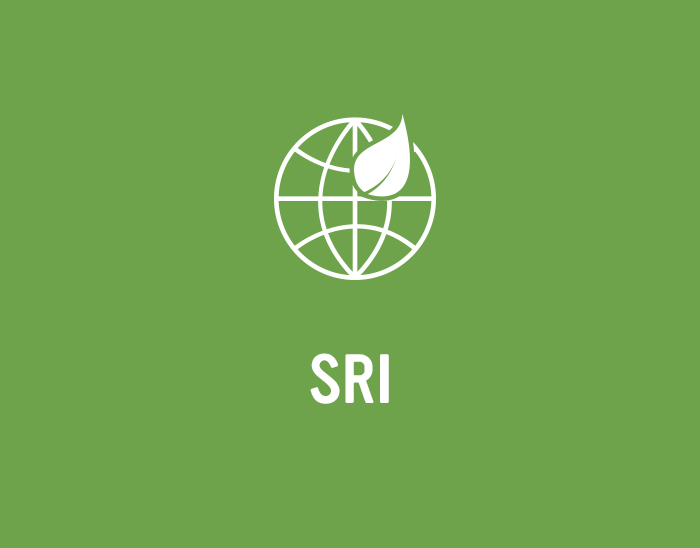
Green wave
Participants in the sustainable-debt space say the launch of green-loan principles (GLPs) could be another evolutionary step in sustainable funding. By standardising and codifying what qualifies as green bank lending, the GLPs could make sustainable finance relevant to a wider cohort of borrowers as well as help identify assets to support future green-bond issuance.
Laurence Davison Managing Editor KANGANEWS
The GLPs are the brainchild of the Loan Market Association and the Asia-Pacific Loan Market Association (APLMA), and were published on 23 March this year. The principles “build on and refer to” the existing green-bond principles (GBPs) “with a view to promoting consistency across financial markets” according to an APLMA statement (see box).
“I think the green-loan market is about to catch fire,” Katharine Tapley, head of sustainable finance at ANZ in Sydney told the KangaNews Sustainable Debt Summit shortly before the publication of the GLPs. “I think the principles will take hold quickly, because banks are also looking at ways to demonstrate that they are lending to the right industries and companies – that they are, in effect, cleaning up their balance sheets.”
Early movers
While green bonds are arguably the more eye-catching funding option, some market participants believe green loans could experience quicker takeup – at least in the sense that there is a subset of corporate borrowers that is very engaged and already sees the potential value to their businesses.
“Since the GLPs have come out we have received a lot of reverse enquiry,” Tapley tells KangaNews. “It is really a no-brainer for borrowers that already have green bonds to look at their bank lending now the principles are available. But in fact it shouldn’t be especially difficult for a lot of our clients that haven’t considered or aren’t in a position to consider green bonds.”
David Jenkins, Sydney-based director, sustainable capital markets at National Australia Bank (NAB), says some borrowers may move quickly to classify at least part of their bank debt as green. “We have had a number of immediate enquiries and there are transactions bubbling away in different markets,” he reveals.
Pace of adoption is not the main game, however. Indeed, Gavin Chappell, ANZ’s Sydney-based head of loans syndications, Australia, says it will take time for the GLPs to gain momentum and for borrowers to understand the positive implications.
Chappell comments: “There will be an education process across the market and I think it will be a couple of years before it really starts to accelerate. Once we get to that point I think the principles will take off, but we are not quite there yet – we also need to see a few deals done before issuers start thinking more urgently about incorporating the principles into their own books.”
Instead, the focus of interest is the range of borrowers that should be interested in green loans. Tapley explains that the source of her excitement about the sector is her belief that green loans should be a debt-funding option for a much wider range of corporate borrowers than can currently take advantage of green-bond issuance.
Specifically, Jenkins suggests there is “no shortage” of unrated or subinvestment-grade corporate borrowers that make use of bilateral bank lending facilities and have an interest in corporate sustainability but are not – for reasons of scale or cost – engaged with bond issuance.
Infrastructure-sector names might also seek certification of appropriate bank debt green – especially construction-phase debt that has always been better suited to bank than bond finance.
Core components
The green-loan principles (GLPs) have been widely anticipated by sustainable-finance market participants, many of whom believe growth in this space could be a game-changer for the debt sector. The goal was to make the green-bond framework relevant to a wide group of borrowers.
The GLP framework is designed to be self-regulating. According to the Loan Market Association (LMA) and Asia-Pacific Loan Market Association (APLMA), it comprises “voluntary recommended guidelines, to be applied by market participants on a deal-by-deal basis depending on the underlying characteristics of the transaction, that seek to promote integrity in the development of the green-loan market by clarifying the instances in which a loan may be categorised as ‘green’.”
The principles were developed by a working party consisting of representatives from financial institutions active in the green-loan market, with a view to “promoting the development and integrity of the green-loan product”.
Their aim is to “create market standards and guidelines to provide a consistent methodology for use across the green-loan market, while allowing the loan product to retain its flexibility, and preserving the integrity of the green-loan market while it develops,” according to the LMA and APLMA.
The heart of the principles is four “core components” that mirror the green-bond principles. These are use of proceeds, process for project evaluation and selection, management of proceeds and reporting.
“This is a great way for infrastructure lenders and asset financiers that may not have been capital-markets issuers to enter into small-scale green finance,” Jenkins says. He points out that NAB earmarked the project-finance facility it provided to the Sydney Light Rail development as part of the collateral for its own green-bond issuance, saying there is no reason, now the GLPs are available, why this facility could not have been designated as a green loan in the first place.
Jenkins adds: “The challenge we face with corporate borrowers is that there has always been concern about the cost of getting specialist teams involved to issue a green bond, and then the requirements of maintaining the verification and certification process. But we can all see it has become simpler and simpler, and the GLPs add another layer of value.”
Liquidity boost
As well as supporting their own corporate-sustainability goals, borrowers may find cost and liquidity advantages from the green-loan format. Market participants are habitually cautious about seeking a pricing advantage from green-bond issuance, but the asset class has anecdotally outperformed in some areas – notably European primary issuance and secondary trading globally.
The pricing equation for green loans looks like it could be similar. Although it is very early days for the sector, Chappell says some of the earliest green-loan deals completed offshore have come with a small pricing benefit to issuers. Green borrowers may also find relatively higher demand for their debt.
“If you have a bank with a finite capital pool to invest and the option to invest in a green or a nongreen loan for an equivalent rate, it makes sense to go for the green loan,” Chappell tells KangaNews. “From this perspective, there will be incremental liquidity for green borrowers – or perhaps more accurately the existence of the GLPs will take liquidity away from those that aren’t.”
Jenkins believes the primary driver of additional liquidity available to green-loan borrowers will initially be banks’ own commitments to increasing their lending to sustainable assets. Labelling loans as green, especially when supported by third-party verification and ongoing reporting, can only make it easier for banks to identify and quantify the qualifying components of their own books.
As green loans become generally adopted – as bankers believe they will, albeit likely over a period of several years – so will the supply of ready-labelled, pre-verified assets suitable for terming out in the bond market. In other words, the development of a green-loan market will likely also prove to be a fillip for green-bond supply.
The first beneficiaries could be banks themselves. Tapley explains: “It is certainly a useful benefit of tagging loans as green that these become a very ready stockpile of assets for our own green-bond issuance. ANZ has a stockpile of loans ready for issuance anyway, because we have a A$15 billion [US$11.7 billion] funding target around environmental and emissions reduction-type activity. But having more green loans on the book will accelerate the process.”
There is also a natural flow-through to term markets for borrowers certifying some or all of their loan facilities as green. The close linkage between the GLPs and the earlier GBPs means borrowers should find it relatively straightforward effectively to roll the same certification, verification and reporting techniques from the loan market to bond issuance.
“The reporting shouldn’t change,” Chappell confirms. “Ideally, it should just become a part of a borrower’s annual reporting pack – whether it is a loan or a bond it should all be covered. In effect, the green-loan framework turns into the green-bond framework.”
End game
The big picture for green loans is the role the asset class could play in completing the jigsaw puzzle of understanding, quantifying and – in the end – favourably funding assets that have a positive sustainable purpose. Green bonds were a bridgehead in institutional lending, but green loans make the same type of assessment a reality for more borrowers, including for project finance and at smaller scale.
Tapley says she “can’t see the market going any other way” than towards a future in which mainstream funding is only available for sustainable assets. She points to adoption of the Task Force on Climate-related Financial Disclosures as a key indicator of widespread commitment by lenders and borrowers, and says regulatory pressure to follow such initiatives will only intensify.
“The regulatory and capital conversation has a way to run, but I suspect Europe will take the lead – relatively fast – and that there will be a lot of regulators watching and looking to do the same in their home markets,” Tapley says.

WOMEN IN CAPITAL MARKETS Yearbook 2023
KangaNews's annual yearbook amplifying female voices in the Australian capital market.











